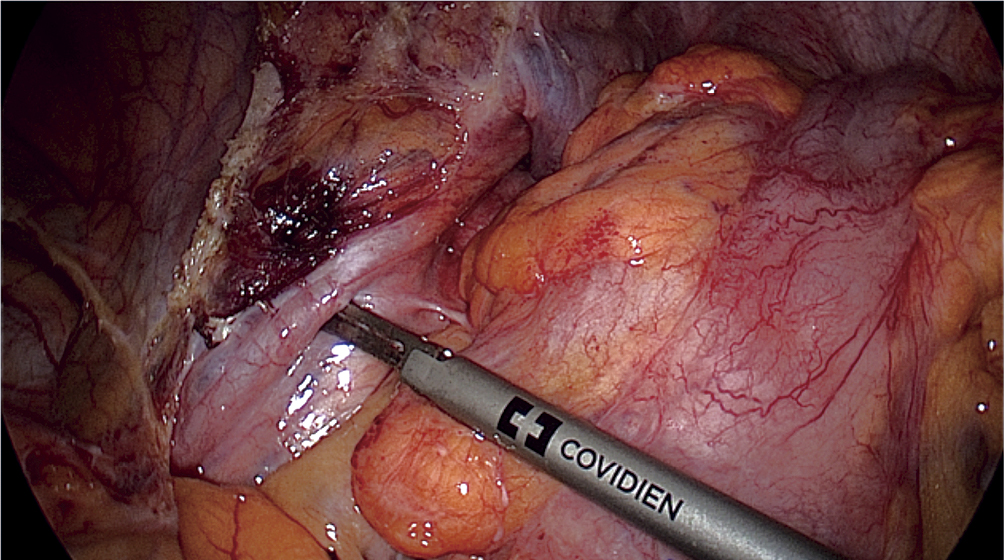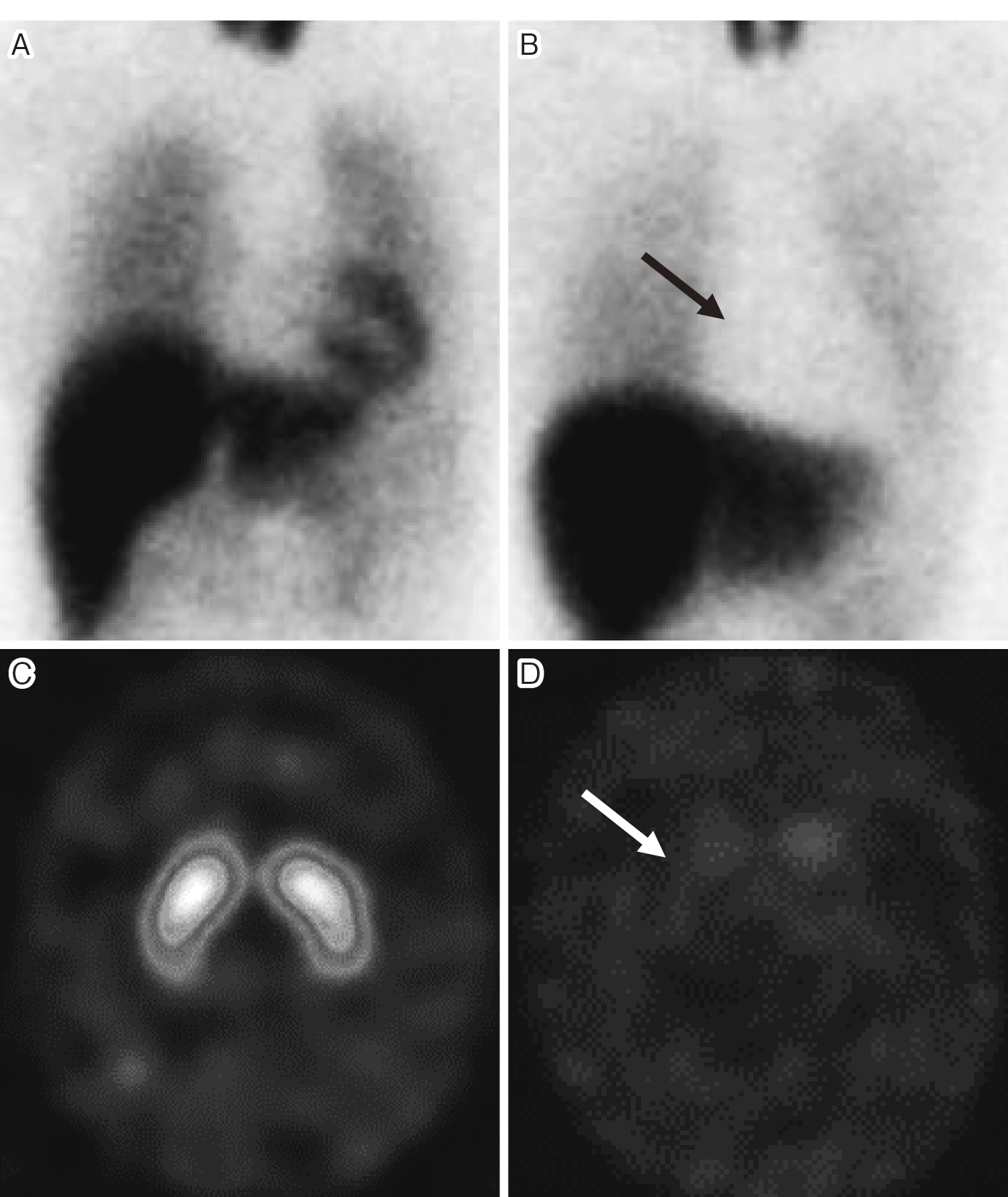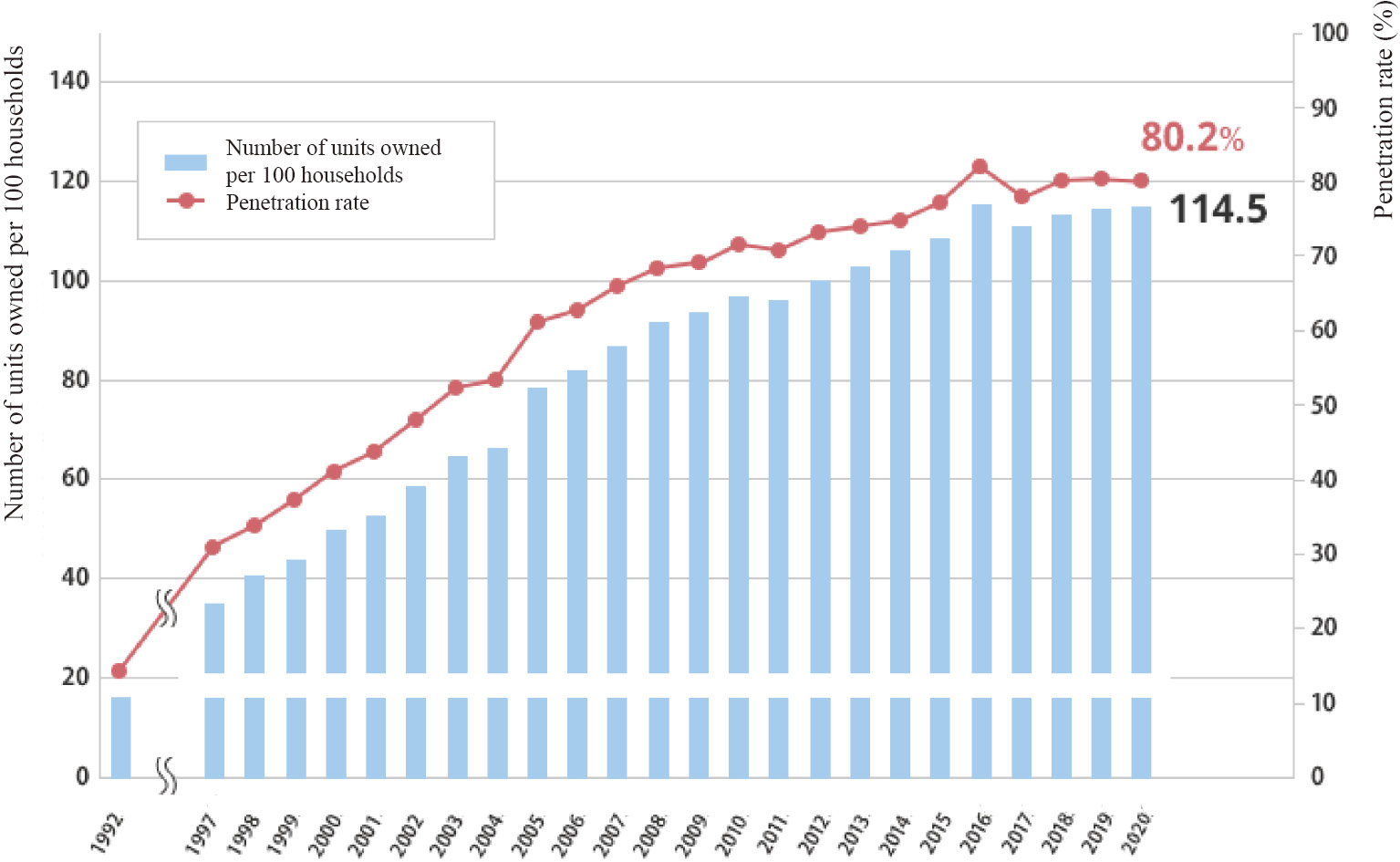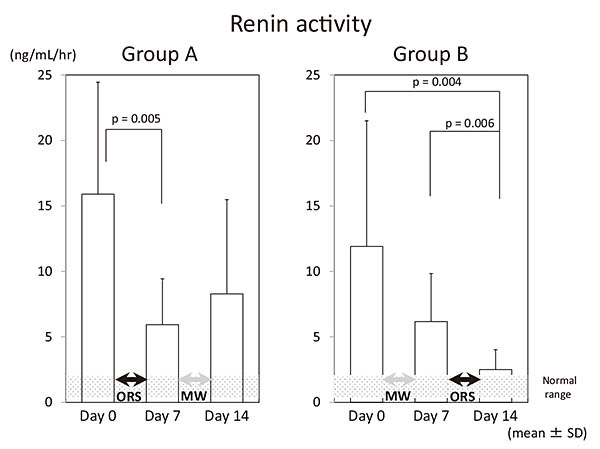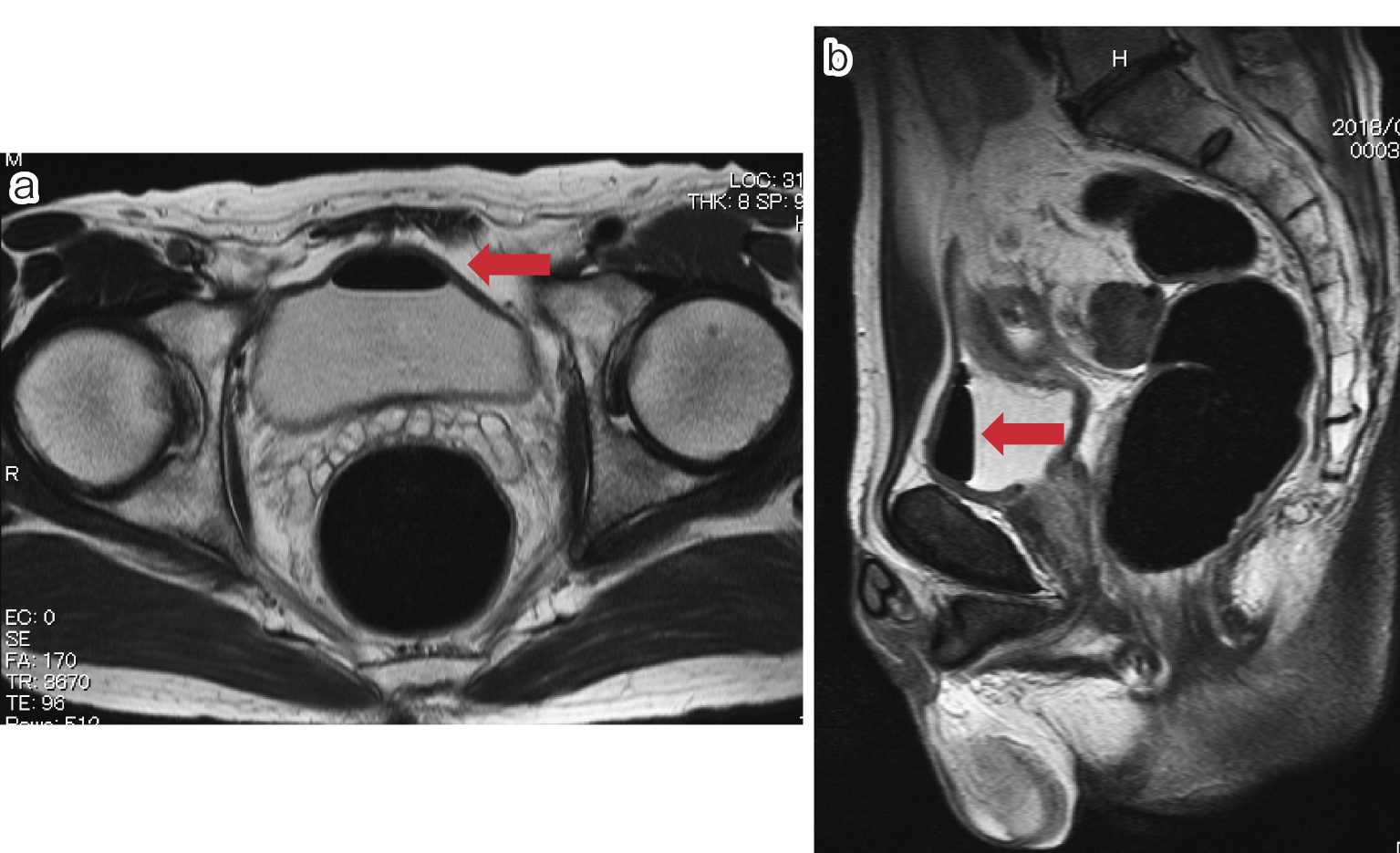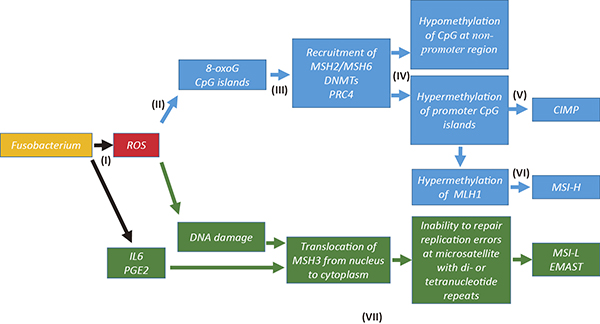- 著者
- Shlomo Yellinek Dimitri Krizzuk Juan J. Nogueras Steven D. Wexner
- 出版者
- The Japan Society of Coloproctology
- 雑誌
- Journal of the Anus, Rectum and Colon (ISSN:24323853)
- 巻号頁・発行日
- vol.2, no.3, pp.71-76, 2018-07-25 (Released:2018-07-30)
- 参考文献数
- 24
- 被引用文献数
- 14
Iatrogenic ureteral injury (IUI) is a dreaded complication of abdominopelvic surgery. Although rare, it is associated with severe consequences. This complication most commonly occurs during gynecological procedures but may also occur during colorectal surgeries. We present two cases of IUI in patients in whom the ureteric stents were electively placed. The first case was a 71-year-old male with no significant medical history. The patient underwent an elective laparoscopic sigmoidectomy for complicated diverticulitis. During the procedure, a proximal IUI occurred, and was recognized and repaired. The second case occurred in a 68-year-old male with a history of multiple complicated abdominal surgeries. The patient underwent a second redo low anterior resection for a long preanastomotic stricture. The IUI occurred in the right fibrosed presacral plane, approximately 3 cm proximal to the bladder. The ureter was reimplanted to the bladder during the same procedure. We will also present a literature review of IUI, including the risk factors, intraoperative prevention, and repair options.
- 著者
- Hiroki Shimizu Makoto Sudo Shinji Furuya Koichi Takiguchi Ryo Saito Suguru Maruyama Yoshihiko Kawaguchi Hiromichi Kawaida Tetsuo Kondo Daisuke Ichikawa
- 出版者
- The Japan Society of Coloproctology
- 雑誌
- Journal of the Anus, Rectum and Colon (ISSN:24323853)
- 巻号頁・発行日
- vol.4, no.3, pp.145-150, 2020-07-30 (Released:2020-07-30)
- 参考文献数
- 20
- 被引用文献数
- 1
Objectives: Rectal stump washout has been widely performed to prevent the implantation of exfoliated cancer cells (ECCs) in patients with rectal cancer. However, it remains unclear whether intraluminal washout before transection is required in patients with sigmoid colon cancer. Therefore, this pilot study was conducted to elucidate the necessity of intraluminal washout for sigmoid colon cancer patients in comparison with rectal cancer patients by cytological assessments.Methods: A total of 16 patients with sigmoid colon cancer and 24 patients with rectal cancer who underwent sigmoidectomy or anterior resection with anastomosis using double-stapling technique were enrolled. A transanal washout sample was collected before washout and after irrigation with 500 and 1,000 mL of saline. Cytological assessments were conducted according to the Papanicolaou classification, and class IV and V cells were defined as malignant.Results: Before washout, exfoliated cancer cells were found in 15 of 24 (62.5%) patients with rectal cancer and in 1 of 16 (6.2%) patients with sigmoid colon cancer (p < 0.001). Distal-free margin from the tumor was significantly shorter in patients with cancer cells (p = 0.002), and the length of the distal-free margin was significantly associated with the tumor location. After irrigation with 500 and 1,000 mL of saline, no cancer cell was found in all patients with sigmoid colon cancer, whereas ECCs were still found in five patients with rectal cancer (20.8%).Conclusions: Intraluminal washout with 1,000 mL may be sufficient for sigmoid colon cancer patients with longer distal-free margin. A large-scale, randomized controlled study is necessary to confirm these results.
3 0 0 0 OA Surgical Treatment of Rectal Prolapse in the Laparoscopic Era; A Review of the Literature
- 著者
- Akira Tsunoda
- 出版者
- The Japan Society of Coloproctology
- 雑誌
- Journal of the Anus, Rectum and Colon (ISSN:24323853)
- 巻号頁・発行日
- vol.4, no.3, pp.89-99, 2020-07-30 (Released:2020-07-30)
- 参考文献数
- 98
- 被引用文献数
- 25
Rectal prolapse is associated with debilitating symptoms including the discomfort of prolapsing tissue, mucus discharge, hemorrhage, and defecation disorders of fecal incontinence, constipation, or both. The aim of treatment is to eliminate the prolapse, correct associated bowel function and prevent new onset of bowel dysfunction. Historically, abdominal procedures have been indicated for young fit patients, whereas perineal approaches have been preferred in older frail patients with significant comorbidity. Recently, the laparoscopic procedures with their advantages of less pain, early recovery, and lower morbidity have emerged as an effective tool for the treatment of rectal prolapse. This article aimed to review the current evidence base for laparoscopic procedures and perineal procedures, and to compare the results of various techniques. As a result, laparoscopic procedures showed a relatively low recurrence rate than the perineal procedures with comparable complication rates. Laparoscopic resection rectopexy and laparoscopic ventral mesh rectopexy had a small advantage in the improvement of constipation or the prevention of new-onset constipation compared with other laparoscopic procedures. However, the optimal surgical repair has not been clearly demonstrated because of the significant heterogeneity of available studies. An individualized approach is recommended for every patient, considering age, comorbidity, and the underlying anatomical and functional disorders.
3 0 0 0 OA Lewy body constipation
- 著者
- Ryuji Sakakibara Hirokazu Doi Shin Fukudo
- 出版者
- The Japan Society of Coloproctology
- 雑誌
- Journal of the Anus, Rectum and Colon (ISSN:24323853)
- 巻号頁・発行日
- vol.3, no.1, pp.10-17, 2019-01-25 (Released:2019-01-29)
- 参考文献数
- 46
- 被引用文献数
- 2 23
We systematically reviewed literature regarding "Lewy body constipation", i.e., constipation due to Lewy body diseases (LBD), with minimal neurologic symptoms. Epidemiology and pathology studies showed that LBD can start with constipation alone, mostly due to neuronal loss and appearance of Lewy bodies in the myenteric plexus. Because LBD significantly increases with age, "Lewy body constipation" may also increase with age. Neuroimaging methods such as metaiodobenzylguanidine (MIBG) scintigraphy and dopamine transporter (DAT) scan provide a way to detect "Lewy body constipation." Key for "Lewy body constipation" includes minimal non-motor features such as REM sleep behavior disorder (night talking). Add-on therapy may be required to ameliorate constipation in patients. Diagnosis is not always easy; therefore, collaboration of gastroenterologists and neurologists is highly recommended to maximize patients' quality of life. In conclusion, "Lewy body constipation" might become a distinct category among geriatric constipation, regarding patients' follow-up and their management.
- 著者
- Akira Tsunoda
- 出版者
- The Japan Society of Coloproctology
- 雑誌
- Journal of the Anus, Rectum and Colon (ISSN:24323853)
- 巻号頁・発行日
- vol.5, no.4, pp.335-339, 2021-10-28 (Released:2021-10-28)
- 参考文献数
- 25
- 被引用文献数
- 3
Electric bidet toilets are widely used in Japan and are sanitary devices, that are integral to daily life. Approximately, half of the population washed the anus before or after defecation. Cleaning the anus after defecation using the bidets contributes to hand hygiene and local comfort, and it may be effective against constipation. However, excessive bidet use potentially causes anal pruritus and anal incontinence (AI). Physicians are advised to instruct patients with anal pruritus to avoid excessive cleaning of the anus and those with AI to discontinue bidet use. For the estimation of the inherent severity of AI, physicians should instruct a bidet user with AI to discontinue bidet use and assess the severity of AI later. Additionally, the nozzle surface and splay water of bidet toilets may be contaminated with fecal indicator bacteria, such as Escherichia coli and Pseudomonas aeruginosa, as well as antimicrobial-resistant bacteria, rendering them a potential vehicle for cross-infection. In the hospital setting, compromised patients must be cautious regarding the shared use of bidet toilets to prevent infection by antimicrobial-resistant bacteria. Specifically, they should be provided with bidet toilets exclusive for them or may need to be instructed to not use a bidet.
- 著者
- Kakuyou Ogawa Ai Tashima Keisuke Okazaki Osamu Morinaga
- 出版者
- The Japan Society of Coloproctology
- 雑誌
- Journal of the Anus, Rectum and Colon (ISSN:24323853)
- 巻号頁・発行日
- vol.5, no.3, pp.229-236, 2021-07-29 (Released:2021-07-29)
- 参考文献数
- 26
- 被引用文献数
- 1 6
Objectives: To evaluate 20 Kampo medicines, which comprised 6 formulas, Otsujito, Junchoto, Tokakujokito, Bofutsushosan, Mashiningan, and Keishikashakuyakudaioto, from 7 brands, to create a ranking of Kampo medicines for appropriate selection of laxatives.Methods: The amounts of sennosides A and B, the important components showing laxative effects contained in Kampo medicines, were analysed using High Performance Liquid Chromatography.Results: We found that the amounts of sennosides A and B were different among brands, even when they had the same formula. Furthermore, the amounts of sennosides differed when the same amounts of rhubarb were used.Conclusions: These results suggest that the differences in amounts of sennosides are caused by the quality of the rhubarb used. Kampo medicines containing laxatives other than rhubarb, including disodium sulphate and hemp seed, had synergistic laxative effects. Thus, in the future, it may be possible to adjust laxative potency of Kampo medicines through further clinical tests.
- 著者
- Katsuyoshi Kudoh Chikashi Shibata Yuji Funayama Kouhei Fukushima Kenichi Takahashi Munenori Nagao Sho Haneda Kazuhiro Watanabe Takeshi Naitoh Michiaki Unno
- 出版者
- The Japan Society of Coloproctology
- 雑誌
- Journal of the Anus, Rectum and Colon (ISSN:24323853)
- 巻号頁・発行日
- vol.1, no.3, pp.78-83, 2017-07-27 (Released:2018-05-25)
- 参考文献数
- 22
- 被引用文献数
- 2
Objectives: The possible effects and benefits of oral rehydration solution (ORS) on chronic dehydration after total proctocolectomy. Methods: To evaluate the effect of ORS on the renin-angiotensin system after remnant proctocolectomy in patients with ulcerative colitis (UC), we selected 20 patients after remnant proctocolectomy, ileal J pouch-anal anastomosis, and construction of a diverting ileostomy for UC. Patients were randomly divided into two groups, A (n=9) or B (n=11), 2 weeks after the surgery. In group A, ORS (1000 mL/day) was given for the first 7 days and mineral water (1000 mL/day) for the next 7 days. In group B, mineral water (1000 mL/day) was given for the first 7 days and ORS (1000 mL/day) for next 7 days. Plasma levels of renin, aldosterone and excretion of sodium in urine were evaluated at days 0, 7, and 14. We defined day 0 as the day of beginning this study. Results: Mean plasma renin levels on day 0 were six to eight times greater than the upper normal limit. In group A, ORS lowered plasma renin levels. In group B, plasma levels of renin and aldosterone after ORS were lower than those at days 0 and 7. Conclusions: ORS corrected increased plasma levels of renin and aldosterone to within the normal range in patients after proctocolectomy.
- 著者
- Kenji Tomizawa Shigeo Toda Tomohiro Tate Yutaka Hanaoka Jin Moriyama Shuichiro Matoba Hiroya Kuroyanagi
- 出版者
- The Japan Society of Coloproctology
- 雑誌
- Journal of the Anus, Rectum and Colon (ISSN:24323853)
- 巻号頁・発行日
- vol.3, no.1, pp.36-42, 2019-01-25 (Released:2019-01-29)
- 参考文献数
- 30
- 被引用文献数
- 16
Objectives: Colonic diverticular disease is widespread in Western countries and its associated with aging. In Japan, diverticulitis and colovesical fistula are also occurring more frequently. Colonic resection for diverticula-related fistulas is frequently technically demanding because of associated acute or chronic inflammation. We evaluated the safety and efficacy of a standardized laparoscopic procedure. Methods: Data from 39 consecutive patients who had undergone laparoscopic surgery for colovesical fistula between October 2006 and August 2017 were retrospectively reviewed. Results: The patients' median age was 60 years and comprised 35 men and four women. Sigmoidectomy was performed in 33 patients, Hartmann's procedure in four, and anterior resection in two. The median operative time was 203 minutes and estimated blood loss 15 mL. There were no intraoperative complications or conversion to open surgery. No patients required bladder repair; three had minor postoperative complications, and none had recurrent diverticulitis or fistula at a mean follow-up of 5.1 years. Conclusions: The magnified vision and minimal invasiveness make a laparoscopic approach the ideal means of managing colovesical fistula. To our knowledge, this is the largest study of colovesical fistula managed by a standardized laparoscopic procedure.
- 著者
- Minoru Koi Yoshiki Okita John M. Carethers
- 出版者
- The Japan Society of Coloproctology
- 雑誌
- Journal of the Anus, Rectum and Colon (ISSN:24323853)
- 巻号頁・発行日
- vol.2, no.2, pp.37-46, 2018-04-25 (Released:2018-04-26)
- 参考文献数
- 82
- 被引用文献数
- 46
It has been recently reported that the population of Fusobacterium, particularly Fusobacterium nucleatum (Fn), is overrepresented in colorectal cancers (CRCs) and adenomas. The promoting effects of Fn infection on adenoma and/or carcinoma formation have been shown in ApcMin/+mice. Characteristics of Fn-associated CRC were identified through studies using human CRC cohorts and include right-sided colon location, CpG island methylation phenotype (CIMP)-high, high level of microsatellite instability (MSI-H), and poor patient prognosis. A subset of Fn-associated CRC exhibits a low level of microsatellite instability (MSI-L) and elevated microsatellite alterations in selected tetra-nucleotide repeats (EMAST) induced by translocation of MSH3 from the nucleus to the cytoplasm in response to oxidative DNA damage or inflammatory signals. The association between CIMP/MSI-H and Fn infection can be explained by the role of the mismatch repair protein complex formed between MSH2 and MSH6 (MutSα) to repair aberrant bases generated by reactive oxygen species (ROS) to form 7,8-dihydro-8-oxo-guanine (8-oxoG). Clustered 8-oxoGs formed at CpG-rich regions including promoters by ROS is refractory to base excision repair. Under these conditions, MutSα initiates repair in cooperation with DNA methyltransferases (DNMTs) and the polycomb repressive complex 4. DNMTs at damaged sites methylate CpG islands to repress transcription of target genes and promote repair reactions. Thus, continuous generation of ROS through chronic Fn infection may initiate (1) CIMP-positive adenoma and carcinoma in an MSH2/MSH6-dependent manner and/or (2) MSI-L/EMAST CRC in an MSH3-dependent manner. The poor prognosis of Fn-associated CRC can be explained by Fn-induced immune-evasion and/or chemoresistance.
